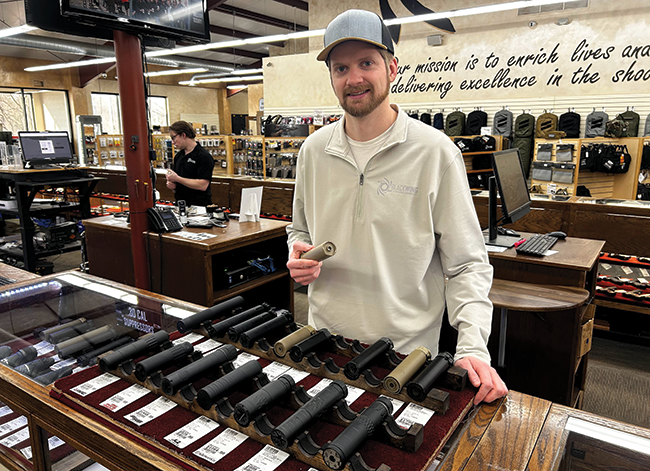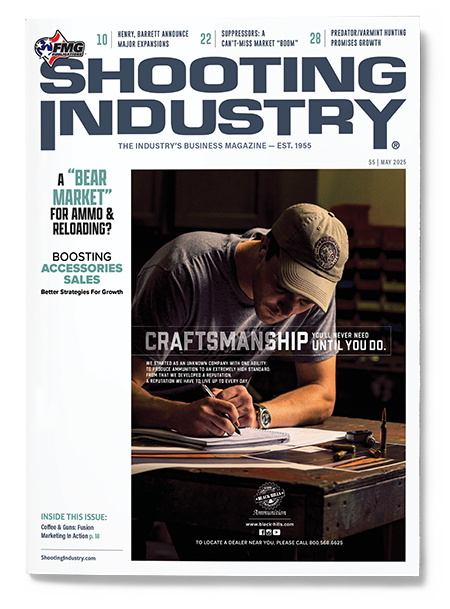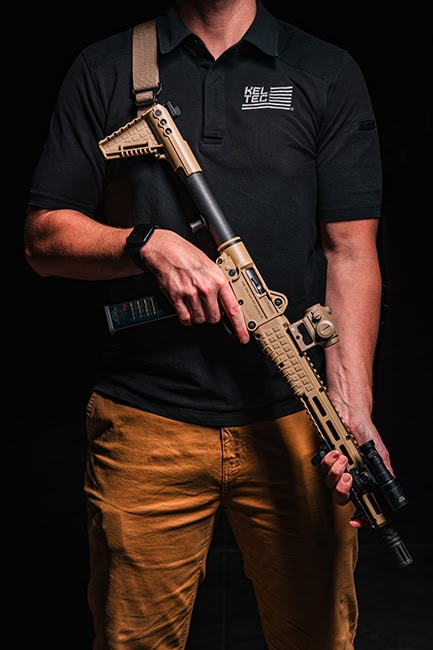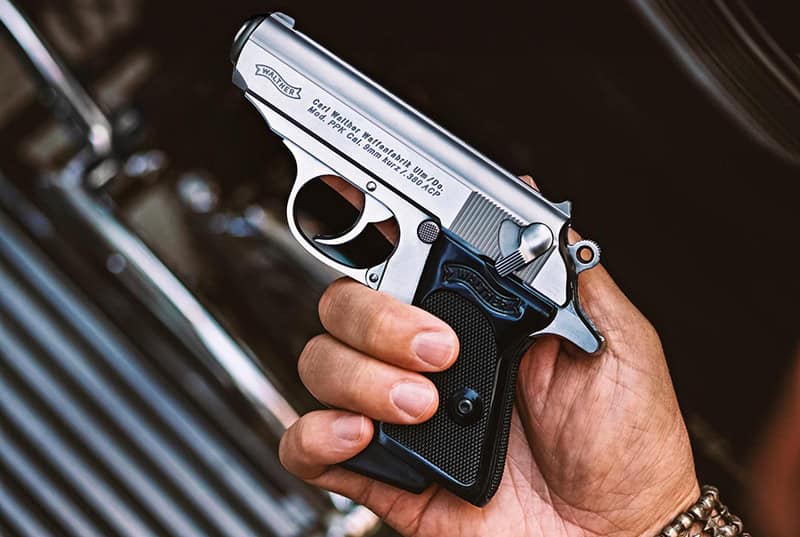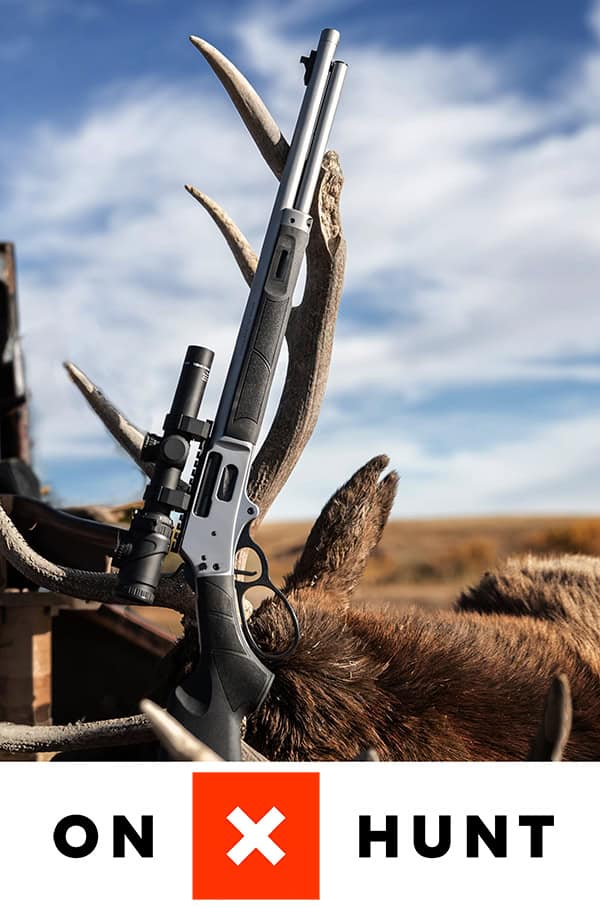Suppressors: Capitalize On A Market “Boom”
What a difference a few years makes in the world of suppressors. Sales of these sound-dampening devices are soaring with customers emptying store shelves and creating demand for innovations and new manufacturing opportunities.
And it’s all because the Bureau of Alcohol, Tobacco, Firearms and Explosives (ATF) is doing a much better job at handing out tax stamps. The byzantine process that previously could take a year or longer is now spitting out approvals within days, or even hours in some instances.
To better understand the impact, consider ATF approved around 2 million tax stamps between 1934 and May 2021. Since then, another 2.1 million suppressors have been approved, according to ATF. By any definition, that’s a boom.
And it’s impossible to overstate the importance of those quick turnarounds. The dynamic has transformed suppressors from a niche curiosity into a staple of everyday conversations among gun owners, suggests Mark Gore, co-owner of Black Wing Shooting Center, in Delaware, Ohio.
“Everyone’s talking about suppressors. Everyone’s got them,” Gore said. “Now the ball is rolling and there’s a lot more people jumping on board.”
But why is a shortened wait worth a couple million suppressors?
The simple fact is people are impatient, noted Darrell Morrow, senior VP of commercial and law enforcement sales for HUXWRX Safey Co. When you pay for something, you want it now — not 10–12 months from now.
“If you already had one, it wasn’t that big of a deal,” Morrow said. “But especially for first-time buyers, it was a pretty big barrier to entry.”
Momentum & Education
Given all the turmoil we’ve witnessed in Washington D.C. — where federal jobs are being slashed — there does seem to be a legitimate concern about whether this sales surge could be threatened. What if cuts at the ATF lead to lengthier approval times?
The concern is there. But as Morrow points out, there’s not much anyone in the industry can do about it.
“It’s not something we harp on because it’s out of our control,” he said. “We just keep our heads down, keep making good products and try to meet customer demand as best as we can.”
There’s also the matter of momentum. With more gun owners buying and using suppressors, there’s a level of demand in the market that wasn’t there back in the slower approval days.
“The market’s only going to grow,” stated Brandon Maddox, Silencer Central CEO. “As more and more people go to the range or go out and hunt with a buddy who has a silencer, it just creates additional pressure.”
Education has also played an important role.
Jess Hancock recalls arguing with customers over the legality of suppressors during the early years of his Kansas shop, The Wichita Gun Club. It was around 2016 and some of them were convinced it was a federal crime to possess a suppressor.
“That has obviously changed,” Hancock lends. “The shooting industry has done a really good job of educating consumers.”
Also pushing things along has been the development of lighter suppressors, using titanium, which is user serviceable. This, coupled with more states allowing hunters to use suppressors, is widening the pool of potential customers, noted Ernie Beckwith, Dead Air Silencers CEO.
“This has brought a new wave of hunters into the market who are looking for a quieter and more effective way to take game,” he explained.
Who’s Buying Them?
There’s no one answer for who’s most interested in suppressors. Much of it is going to depend on your customer base.
In Ohio, Black Wing’s customers are more likely to use them for recreational shooting, where they offer a range of advantages. They can help save hearing, take a bite out of the recoil and cut the amount of gases directed back toward the shooter. It’s difficult to imagine a better combination of features for novice shooters.
“It just makes shooting more pleasant, even on an indoor range,” Gore contended.
In Kansas, The Wichita Gun Club sees more interest from hunters, who represent about half of the shop’s suppressor sales. They’re particularly popular among coyote hunters, who work at night.
“Everybody’s shooting suppressed thermals. You’re out with your buddies and you’re still able to talk,” Hancock observed. “And you’re not scaring everything else away when you’re shooting in the dark.”
Don’t Miss Out
If you aren’t currently selling suppressors — where legal — you should ask yourself why. And then consider what you might be missing out on. Could you even be risking losing some of your customers?
“Shops that don’t carry suppressors are leaving money on the table with one of the fastest-growing segments of the firearms industry,” argues Beckwith with Dead Air Silencers.
If nothing else, suppressors have profit margins of 25–30% — considerably better than most guns in your store. These items also drive additional sales, including threaded barrels and subsonic ammo.
And they give customers yet another reason to visit your store, says Maddox with Silencer Central. The sale of a suppressor could bring the same customer back to your store three or four times as they work through the process.
“So, it’s additional traffic you can bring into your store. And it makes you a trusted resource, where others in your area aren’t,” Maddox said.
Unfortunately, there’s another side of the equation if you are sitting on the sidelines. You may be giving competitors a chance to gain the same advantage over you.
“If they buy a silencer from someone else, are they going to keep going to that dealer? Have you potentially just lost that customer?” Maddox asked.
Historically, some of the biggest barriers to suppressor sales were the paperwork and storage demands. But times have changed.
Most suppressor companies and distributors like Silencer Central and Silencer Shop offer education and guidance and often provide their own systems to help with the paperwork.
Storage issues have also been drastically improved. A few years ago, if you were heavily active in suppressor sales, you could find yourself with 100 or more suppressors sitting in your safe awaiting tax stamps, said Morrow with HUXWRX.
“Now it might be a couple dozen or less because the turnaround times are so much better,” Maddox said.
One bit of advice: If you do decide to dip a toe into suppressor sales, put one staffer in charge of them.
“Pick one person and make him or her the expert, and let them execute it,” Maddox advised.
What About The Hearing Protection Act?
It’s hard to talk about suppressors without taking a little trip down memory lane — back to 2017 and the failed effort to remove suppressors from the scope of the National Firearms Act. The so-called Hearing Protection Act attracted some initial Congressional support, but eventually floundered.
Could it be revived?
In some ways, a serious revival could actually serve to dampen suppressor sales — at least while the measure works its way through Congress. It’s essentially what happened in 2017, when gun owners were optimistic about passage. Many of them put off purchases while waiting to see how things played out. Why pay $200 for a tax stamp if you think there’s a chance tax stamps will go away?
For now, at least, the industry remains pessimistic about the potential for lightening or eliminating regulations on suppressors.
“Our response has been it’s going to be very difficult to get 60 U.S. senators to agree on anything,” said Maddox, with Silencer Central.

